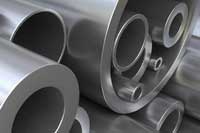What's a Piping Specification?
The Piping Specification (abbreviated: Pipe Spec) is a document prepared during the design phase of any project. It provides the appropriate selection, specification and material grade of pipe and piping components for a given service.
For all subsequent maintenance and repair on a section of pipe, the piping specification remains as the key to correct material selection.
Before commencing any job, reference to the piping specification is essential to specify and use the correct materials. For the job check that you are using the latest revision of the specification.
Do not rely on "what was installed before must be right" as this is not always the case! If a discrepancy is found, it should be reported.
Note that a piping specification only applies to the defined plant, site or installation. Other sites or plants for example can have their own piping specifications and they are NOT interchangeable.
To use the piping specification, reference must first be made to the Process and Instrument Diagram. Identify the section of pipe in the PID and a line number will be quoted, e.g:
12-FW-1014-1CS1P which is interpreted as follows:
- 12 - The nominal pipe size of the line.
- FW - The service code. This refers to the contents of the pipe. In this instance, FW refers to Fire Water.
- 1014 - The pipeline number which is a unique number allocated to a specific section or run of pipe during the design stages.
- 1CS1P - The piping specification number. This is a short-hand reference into the piping specification document, and is also unique to that document. The first number normally refers to the pressure rating of the system.
Having determined the piping specification number, turn to the appropriate page in the piping specification document. There the correct type of gasket, the correct grade of studbolts, spectacle blinds, blind flanges, pipe material, pipe wall thickness will be specified for the job in hand.
In the pipe specification are also links to other standards, such as testing, welding, inspection, painting and so on. You will also find a so-called Branch Table, which tells you how a branch is to be made.
|
PIPE SPEC |
Description | |
| 1 | Class 150 | 3 = class 300 6 = class 600 9 = class 900 15 = class 1500 25 = class 2500 |
| CS | Carbon Steel | CA = Carbon Steel Alloy Low-Temp (Killed Steel) SA = Austenitic Stainless Steel 304SS SD = Austenitic Stainless Steel 316SS |
| 1 | Corrosion Allowance (1 x factor) |
0 = Stainless steel or other Austenitic Stainless Steels |
| P | General Process Non Corrosive |
FW = Fire Water V = High Process Vacuum A = Alloy 20 valves |
|
The primary purpose of the Pipe Fabrication Institute is to promote the highest standards of excellence in the pipe fabrication industry. |
Related Post(s)

The article shows an example of a Piping Specification in more detail...
